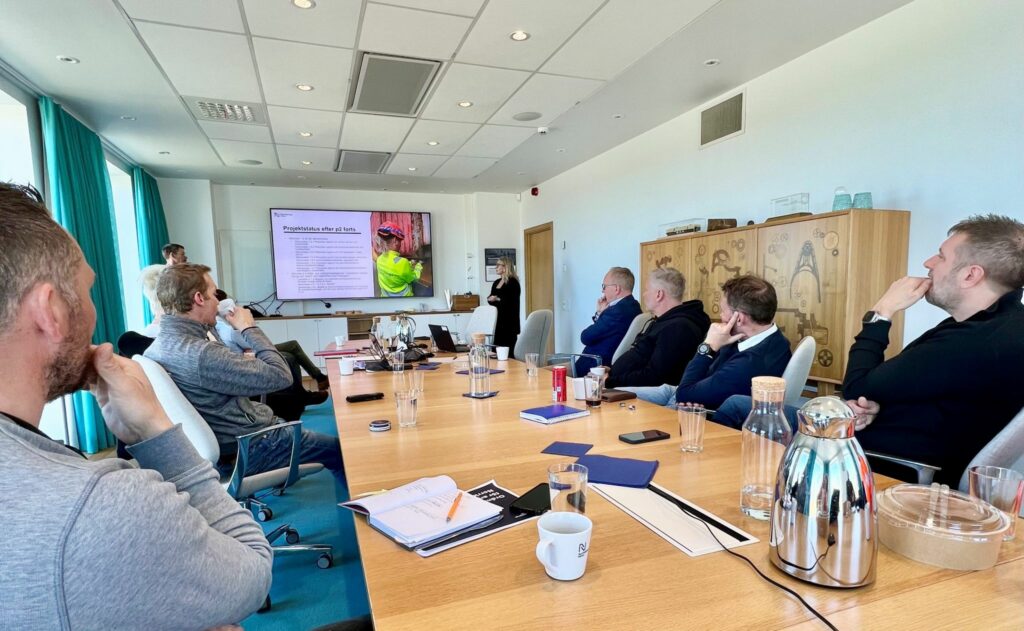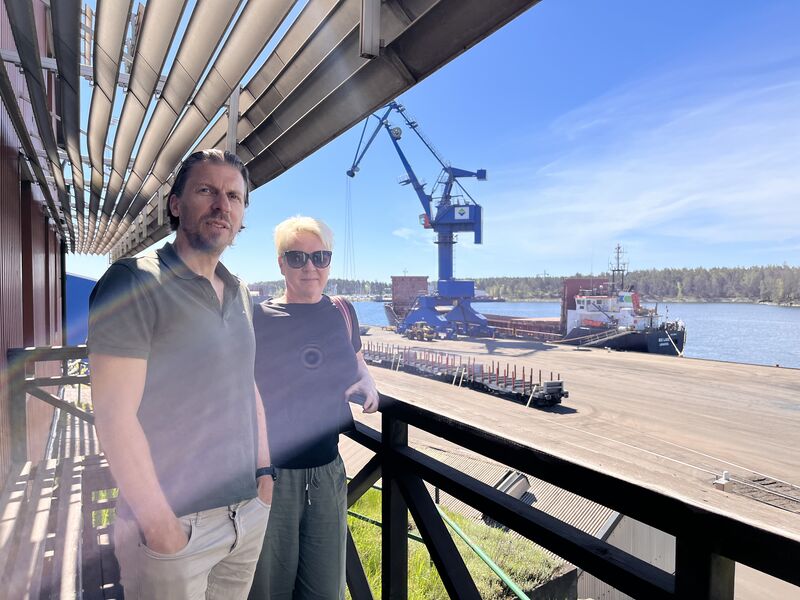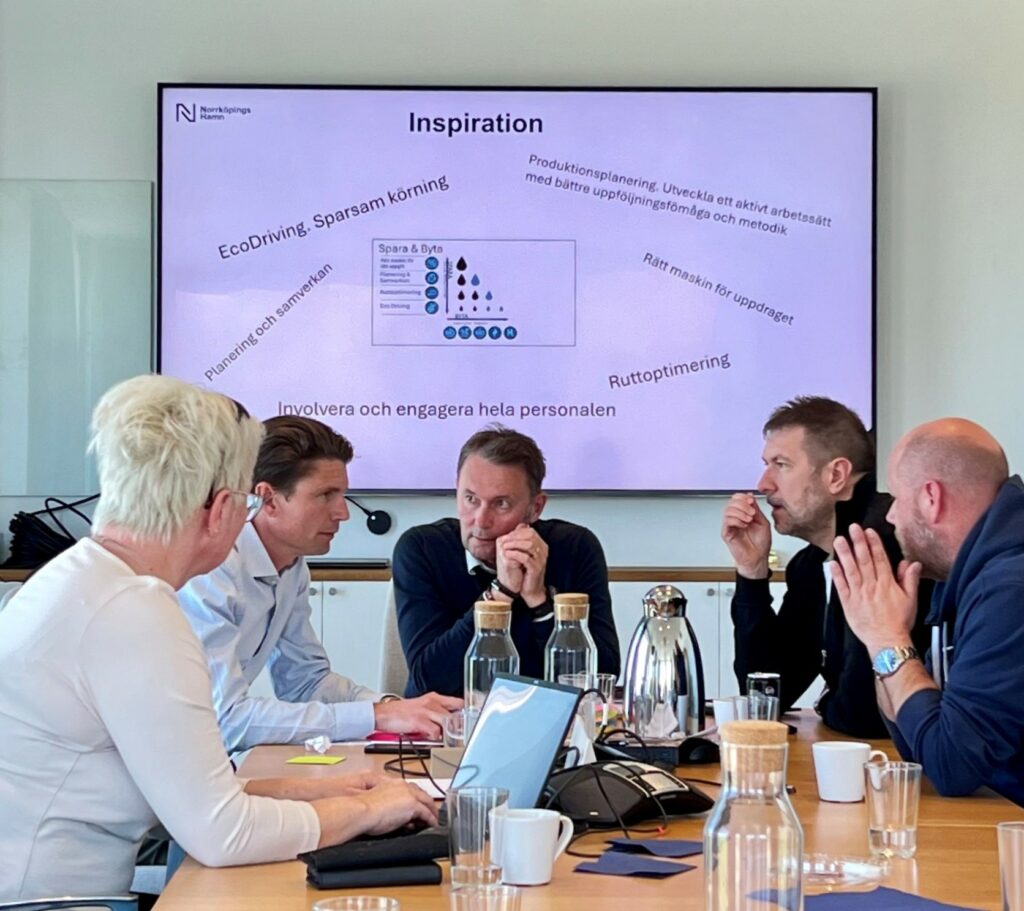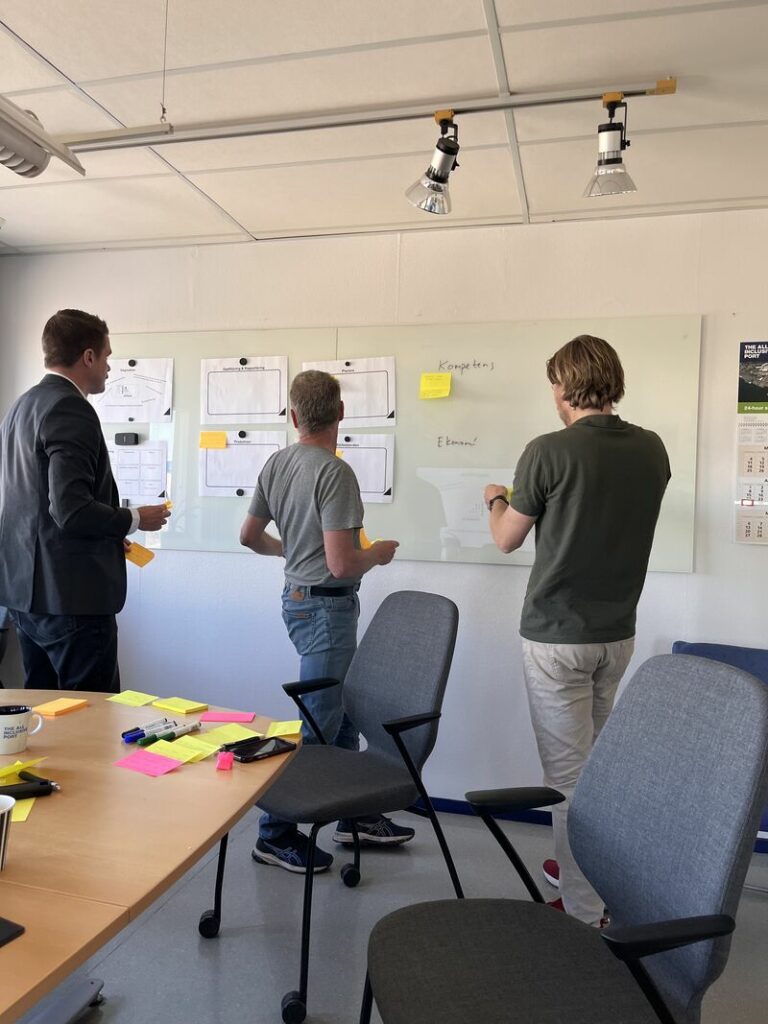Almost 70 Ideas on How to Be Smarter and Greener – Workshops Revealed an Ambitious Attitude Towards Sustainability at the Swedish Pilot Ports
Project Sustainable Flow had two workshops concerning CO₂ emission reduction in port operations in Sweden in May. The results of these workshops show that it’s time to leave the theoretical discussions behind – and get down to business.

What kind of efficient ways there are and what could be done to reduce CO₂ emissions in port operations? These were the core questions in two workshops that took place in the ports of Norrköping and Oxelösund, Sweden. Both workshops were conducted as part of Interreg Central Baltic programme project Sustainable Flow and they were organised by one of the seven project partners i.e. Transportföretagen (TPF), the Swedish Confederation of Transport Enterprises.
The workshops were found beneficial by both the participants from the ports and the organiser. Johan Klingemark, Senior Business Controller of Port of Oxelösund, describes the experience of having taken part in the workshop in Öxelosund as very positive.
– A lot of good ideas came up from the participants, both short and long term activities, that could help our port reduce our CO₂ numbers. The next step is to decide which initiatives we could start implementing. It is also important to get all onboard in our journey towards lower emissions and more efficient energy use at the Port of Oxelösund, Klingemark says.

Dozens of Ideas Demonstrate the High Level of Commitment
Sustainable Flow has seven partners in four countries and there have been similar stakeholder engagement activities organised already earlier. As Klingemark, also Cathrin Merino, Project Manager representing the TPF, was happy with the outcome of the workshops in Sweden.
– We got altogether close to 70 ideas in the workshops. I was pleased see such commitment and to witness visible enthusiasm for finding ways to reach more sustainable operations, Merino says.
The number is great considering that the workshop in Norrköping had 15 participants and Oxelösund 11. The participants were chosen cross-functionally, representing different roles at the pilot port. Getting different aspects on all organisational levels was considered important: reaching a common goal requires joint efforts regardless of the job title.
Furthermore, commitment to the project is not shown only as a number of ideas.
– Both ports participating in the project have formed their own dedicated teams, which shows a high level of commitment to get tangible results, Merino acknowledges.

Behavioural Changes Also Needed
The workshops also addressed the importance of behavioural changes and cultural shift needed among port staff to achieve the goals. For example, the Evisa tool that was used to calculate the baseline measures for CO₂ emissions, showed that the ports’ machinery and cargo handling functions are among the most remarkable emission sources. Hence, to reduce unnecessary driving in the port area necessitates changes in practices in operating cargo handling equipment, for instance.
Not everything is in the ports’ hands, though. In the big picture, the vessels play even a bigger role.
– It is impossible to avoid talking about the vessels and how the port could reduce the emissions from them. Therefore, the ability to install power supply from quay is crucial when hunting for reduced emissions in ports, Klingemark says.

Sustainable Flow Project Heads-Up
Even though the workshops were a success, Cathrin Merino is also excited about the upcoming phase of the project.
– Things are ramping up and project is not anymore about theoretical discussion only. For example, we are about to go public with the tendering process of the digital tool development, Merino explains.
The digital tool to be developed will not reduce the CO2 emissions itself but together with other practical energy saving measures and production of renewable energy, the information gathered and analysed with the tool will improve the ports’ capacity to make more sustainable decisions related to their operations.

FACTS OF THE PROJECT
The Sustainable Flow project focuses on the Interreg Baltic Sea region and there are seven pilot ports involved in the project in total. In addition to Norrköping and Oxelösund, the other project pilot ports are the Port of Tallinn, Estonia, the Port of Riga, Latvia and three ports in Finland: Rauma, Pori, and Mariehamn in the Åland island.
At the heart of the project is to support the seven pilot ports to reduce CO₂ emissions by 10 percent, compared to the baseline levels measured during the first year of the project, by May 2026. This is achieved through concerted efforts of seven project partners in four countries.
The project has two main objectives:
· Development of practical solutions and a digital tool to support CO₂ reduction and energy saving measures in transportation systems, and
· A concept for energy savings and production of renewable energy in ports as hubs of multimodal operations.
Writer: Krista Koski

